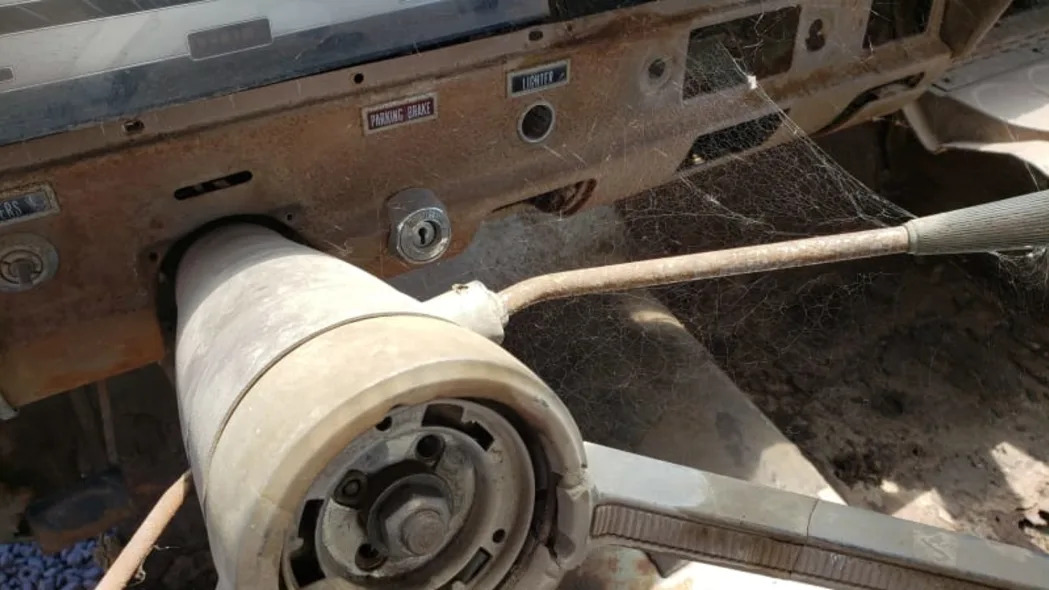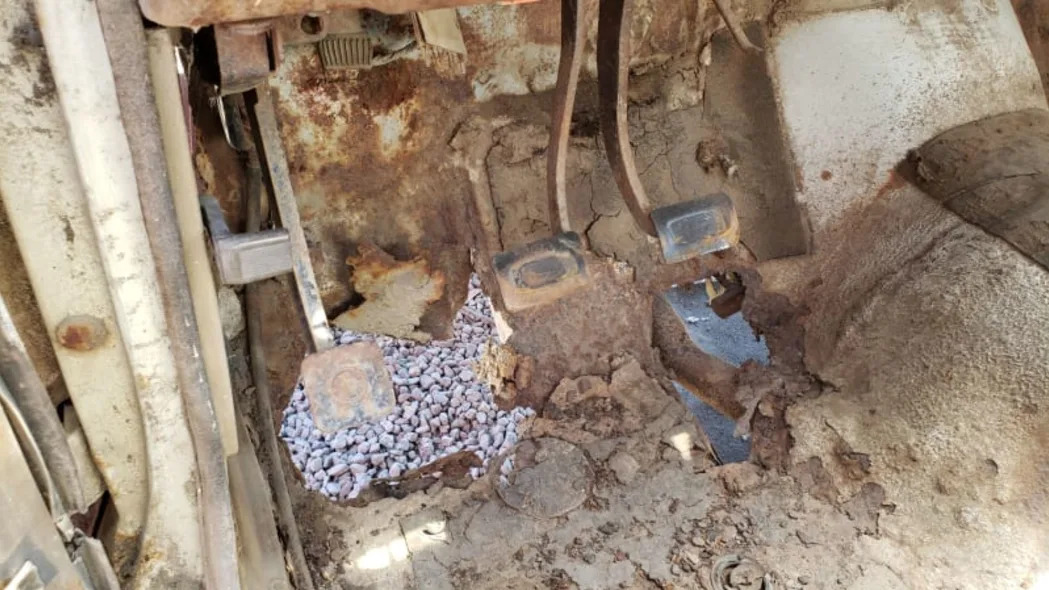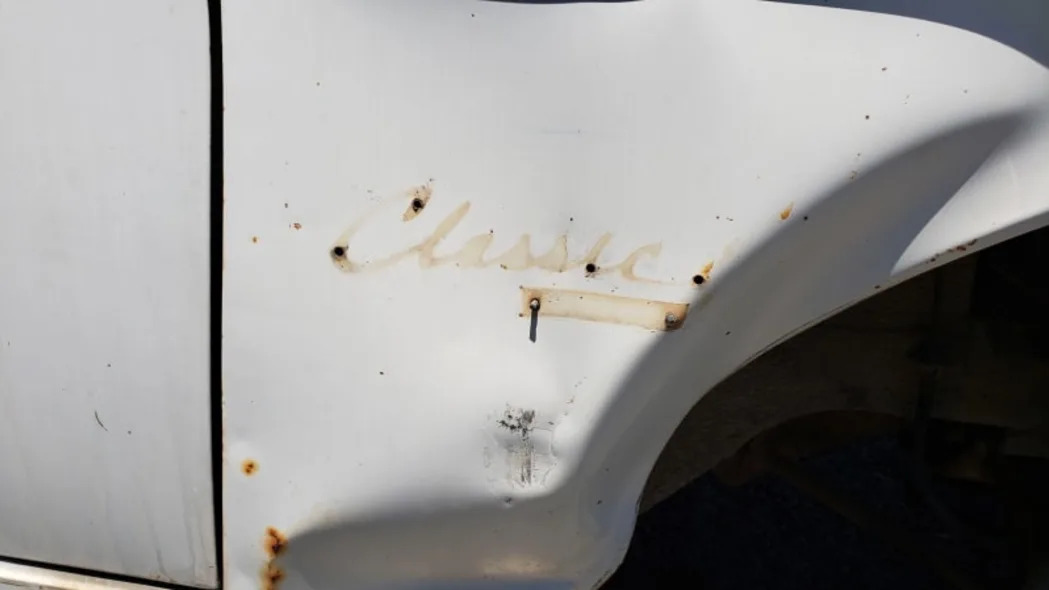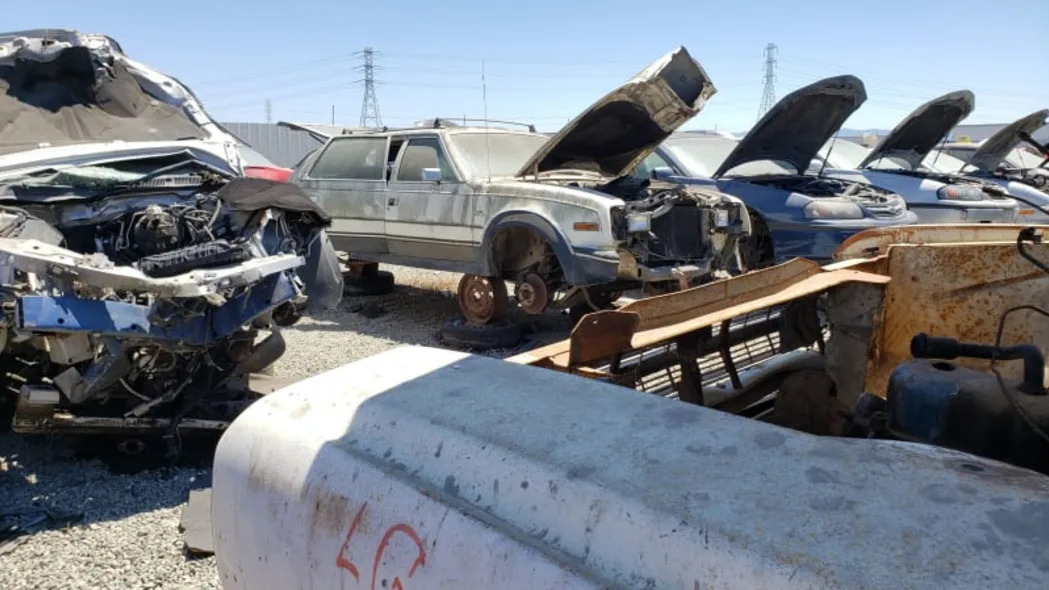American Motors had big plans to take on GM, Ford and Chrysler across a fatter slice of the product line during the second half of the 1960s, creating a sporty fastback and making the Ambassador bigger and ritzier. Since Kenosha-built sensible compacts sold like crazy under Rambler badging during the late 1950s and well into the 1960s (inspiring a hit novelty song along the way), AMC held onto the Rambler marque until the 1969 model year. From 1961 through 1966, the Rambler Classic was AMC's low-priced midsize car, stealing many a sale from its Big Three rivals. Here's a final-year-of-production Rambler Classic 550 sedan, photographed in its final parking space in a San Francisco Bay Area self-service boneyard.

From the late 1930s through the early 1960s, most American family cars had straight-six engines. Flatheads gradually gave way to pushrod sixes, with Chrysler building its last U.S.-market flathead cars in 1959 and AMC hanging on to the valve-in-block design on its cheapest Ramblers through 1962. The engine in this Junkyard Gem is the 199-cubic-inch AMC six, rated at 128 horsepower. If this six looks familiar to you Jeep fanciers, that's because it's the direct ancestor of all those 258s and 4.0s used in Jeeps from the early 1970s all the way through the 2006 model year.

When you bought an entry-level midsize sedan in North America in 1966 (or 1946, for that matter), you almost always got the cheapest possible transmission setup to go with your straight-six engine: a column-shifted three-speed manual, popularly known as the three-on-the-tree. Floor-shifted three- or four-speeds cost plenty back then, and an automatic could add 10% to the cost of a new car.

The big rust hole beneath the clutch pedal tells us that the weather stripping in this car dissolved decades ago, allowing the California winter rains to fill up the footwells with water and rot the floors. The fenders look solid, though.

The 550 was the cheapest Rambler Classic four-door you could buy in 1966, listing at a stingy $2,238 (that's about $18,945 in 2021 dollars). The two-door post 550 sedan cost just $2,189 that year.

Meanwhile, your Ford dealer would sell you a new '66 Fairlane Six four-door sedan for $2,280, and you'd get just 105 horses out of that car's 170-cube straight-six. Walk across the street to the Chevrolet showroom and you'd find a new Chevelle 300 sedan with a $2,202 MSRP— 36 bucks cheaper than the Rambler 550 and with just eight fewer horses. Perhaps because the base engine in the 1966 Plymouth Belvedere I was a 225-cubic-inch Slant-6 making a mighty 145 horsepower, the cheapest possible Belvedere sedan that year cost $2,315. To be honest, I think I'd have taken the Belvedere over the Rambler, Chevelle or Fairlane, were I sticking with zero-extras base sedans in 1966, just based on the powertrains.

The last-model-year Rambler Classic was a good deal on a solid car, though, and this one outlived most of its contemporaries by several decades. It's fitting that this one spends its final pre-crusher months parked just across the aisle from its descendant: an AMC Eagle.
What better car to use in a test to compare "localized" gasoline to the cheap stuff?
The Sensible Spectacular.










Sign in to post
Please sign in to leave a comment.
Continue